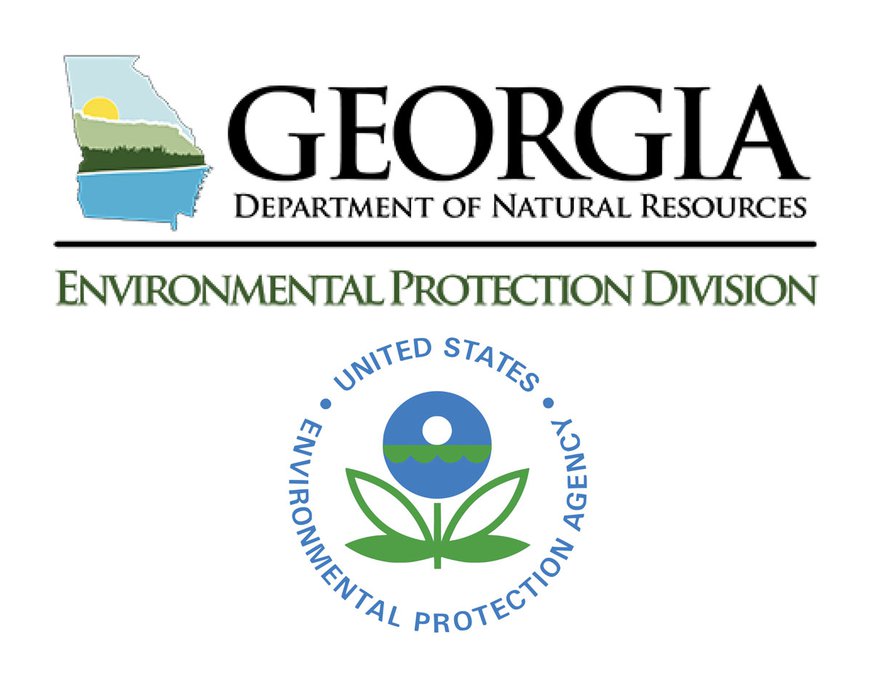COVINGTON, Ga. – In a conference call Friday, July 26, representatives with the Georgia Environmental Protection Division and the United States Environmental Protection Agency answered questions related to a recent report claiming unsafe air quality in the Covington area.
Becton Dickinson, or BD, is a medical technology company that manufactures and sells medical devices, instrument systems and reagents. In part of the sterilization process of the medical equipment, a chemical called ethylene oxide is used. A portion of that chemical is released into the air during the sterilization process.
BD's Covington facility is equipped with state-of-the-art equipment which destructs 99.95% of emissions when the facility is only required by law to destroy 99% of emissions, according to Ellen Kondracki, vice president of Environmental Health and Safety for BD. The 0.05% of emissions that are released into the air are considered trace emissions.
“We are continuing to constantly look at ways to reduce trace emissions that may come off the product, and that’s what we are currently working with EPD on,” Kondracki said during Tuesday night’s Newton County Board of Commissioners meeting.
BD has been working alongside EPD since December 2018. The company works under an air permit, issued by the EPD, that requires stack testing, which confirms the destruction rate efficiency of emissions released from the equipment.
Kondracki assured that the company was “under compliance with the air permit.”
Karen Hays, chief of the EPD Air Protection Branch, laid the groundwork in Friday's call by explaining where reported numbers came from and what progress has been made since the publication of the report.
According to a report released by WebMD and Georgia Health News Friday, July 19, Georgia has three census tracts affected by increased ethylene oxide levels – one of those being in the Covington area.
“The report estimated that around Smyrna, ethylene oxide causes 114 extra cases of cancer for every million people exposed over their lifetimes,” according to the WebMD report. “In Covington, it estimated the gas causes 214 cases for every million people exposed. The EPA considers the cancer risk from pollution to be unacceptable when it tops 100 cases for every million people who are exposed to a chemical over the course of their lifetime.”
Hays clarified the process and said the 214 number came from the 2014 National Air Toxics Assessment, or NATA, which was completed and released by EPA in August 2018.
“The new findings are not due to new sources or increased amount of ethylene oxide being released into the atmosphere,” according to an EPD statement released Thursday, July 25. “Rather, it is because in late 2016, EPA determined that the risk of long-term exposure to ethylene oxide is greater than previously thought and updated the risk calculations.”
Hays said the EPD took the 214 number from the NATA and began to research further into the issue.
“Think of being up in an airplane and looking out the window,” Ken Mitchell, EPA Region 4, said. “You’re taking a 50,000-foot look at the earth. You see something way down there that looks like there’s something that might not be right but you can’t tell because you’re 50,000-foot up. So, you say to yourself ‘That looks like that might be a problem, but I’m not sure because I’m 50,000-foot up in the air, let me go down and get some real on the ground maps and then I’ll figure out if it is problem.’ Well, NATA is kind of the same way. We do these analyses at the national level looking across the whole United States at kind of a 50,000-foot look.”
The NATA provides a rough look at places that need further investigation. That is where the 214 number comes from, Mitchell said.
“After we identify that first rough cut of the potential problem, the state then goes down to the ground level and goes to the place where the problem may be and they collect that site-specific information,” he said. “That’s where it comes down from 214 in a million to 100 in a million because it is a better answer – it is a more site-specific, more refined answer.”
The EPA’s acceptable area concentration, or AAC, is 100 in a million, while the EPD’s AAC is 1 in a million.
The WebMD report stated Covington had concentrations of ethylene oxide at a rate of 17 to 97 times the AAC of the EPD, which is still lower than the EPAs accepted concentration, Mitchell said.
Hays said there has not been ethylene oxide testing of the air quality in Covington, with the exception of testing done at BD. Testing at both the EPA and EPD-approved levels does not yet exist.
Mitchell said the lowest testable level of ethylene oxide in the air is 0.08 micrograms per cubic meter, which is still four times higher than the EPA’s accepted amount. The test could also not necessarily determine the source of the ethylene oxide in the air.
“Ethylene oxide is used for a lot of things,” Mitchell said. “It is used in a range of products. It is used to make a range of products really – like antifreeze, textiles, plastics and all kinds of things.”
Michell emphasized ethylene oxide is the only option available for some objects that require sterilization.
"Even though our (ethylene oxide) emission controls are among the most effective in the industry, BD is continuously striving to improve air quality controls at our facility," according to a BD company statement released July 25. "We are currently working closely with Georgia EPD to implement additional voluntary improvements to further reduce emissions in Covington and Madison. To achieve this, BD is working with industry partners and Georgia EPD to discover new system and process innovations that will further reduce (ethylene oxide) emissions at our facilities, which the company plans to implement as soon as designs are finalized and approved through the appropriate permitting processes.
"BD cares deeply for our employees and the communities in which we operate. We are an important part of the Covington and Madison communities and take our responsibility to be a good corporate citizen very seriously. In addition to Georgia EPD, we are collaborating with local, state and federal officials to provide information and awareness of the high level of process safety and environmental controls used in our Georgia facilities, and we are committed to maintaining community transparency. We simply would not operate a facility that we do not feel is safe for employees and neighboring residential areas."









